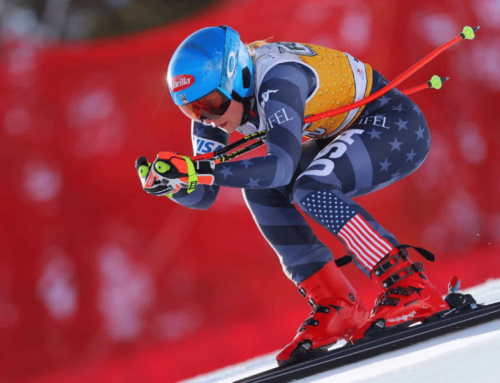Racing under the radar
As ski races get canceled and postponed, states tighten restrictions on schools and sports, and the racing calendar becomes more like a Magic 8 Ball than a planning tool, training can start to feel a little … pointless. Without the buzz of competition, it’s a challenge to keep each training day from feeling like the one before.
This is what inspired University of Colorado coach Richard Rokos to officially kick off an unofficial racing series that he hopes will invigorate pandemic training for collegiate athletes until they can return to normal racing. Rokos describes the effort as an “underground, non-sanctioned, non-scheduled, non-traditional return to alpine racing.”
The inaugural event was the first annual Bob Foss Memorial GS at Eldora Mountain on Wednesday. Rokos invited collegiate athletes from various eastern and western college teams to join CU athletes for a pair of two-run races. To conform to their training requirements of being off the hill by the time the public arrives, the early morning gunslinging event concluded by 9 am. Winners in the first race were Emma Hammergard (CU) and Tristan Lane (DU), and in the second race Stef Fleckenstein and Joey Young, both from CU.
Filling the COVID gap
Unlike most of the eastern (EISA) schools, the western (RMISA) schools will have a full competition season this year, with meets clustered in Colorado in January and in Utah in February. The athletes will still have four qualifiers and regionals, and head to Cannon Mountain in New Hampshire for the NCAA Nationals in March. UNH stepped in to replace Middlebury as host when the NESCAC canceled winter sports for their member schools.
Until the RMISA competitions begin, most CU athletes are staying local to train through the holiday break. When the December FIS races at Loveland and Steamboat got canceled, Rokos saw an endless training horizon until the next race, and knew he needed to do something to create a spark.
Ripples in the still water
Even among high level athletes, it is all too easy to fall into the spot where you think you belong in a team hierarchy. “You need to make waves or it stays too comfy, too calm,” says Rokos. His solution was creating the equivalent of sandlot ski racing, with kids from other neighborhoods. “The concept is just to bring a little competition to the daily routine of training; to introduce a bigger or wilder fish to the still pond.”
Rokos has done this often in his 31-year career leading the Buffs. “That was my secret weapon for decades,“ he explains. When the pro tour was strong, his training guest list included the likes of Bernhard Knauss, Rolland Pfeifer and Sebastian Vitzum. He hosted Michael von Gruenigen for a full week before the 2002 Salt Lake City Olympics. “What this does to developing skiers is beyond the imagination.” In short, it recalibrates the notion of what is possible. Rokos, ever the historian, likens it to Roger Bannister breaking the elusive 4-minute mile barrier, then having four other athletes break that “impossible” barrier within a year.
The price is right
Rokos, a longtime friend and disciple of former CU and US Ski Team Coach Bob Beattie, notes that it goes back to Beattie’s vision of how to improve ski racing: Make it local, make it inexpensive and make it fun. “His concept was driven by the cost of the sport, and mine is driven by COVID rules and by the need for action,” says Rokos.
In keeping with the spirit of the event, there is no additional cost to invited athletes. Rokos has contracted with Eldora, which fully cooperated to launch the event, to use complimentary passes for all guests. “In return I am asking for discipline and a positive attitude,” he says.
Because these races are basically what the coaches already set up as part of daily training, they don’t require extra help. “No codex, no team captains meeting, no paperwork and no FIS points,” says Rokos. The field size is limited, by COVID restrictions, to 12 men and 12 women, which includes CU athletes and invitees. For the first race, Rokos invited athletes from DU, MSU, Bates and St. Lawrence for a total field size of 23.
The competitors inspect, do their four runs, and are off the hill in two hours. Awards will likely range from a round of applause to a milk shake. The idea is to put bibs on and add some interest and challenge to the training day. Rokos and DU coach Andy Leroy will work together to do a similar event with their athletes, and possibly some junior racers, at Loveland next Wednesday, and somewhere weekly until the official racing gets underway.
The effort serves multiple purposes. It energizes athletes, raises their level, and supports the mental health of young people who are used to the physical and social boosts of competition. It also demonstrates some activity to the NCAA, at a time when all sports programs are under increased scrutiny. Rokos believes skiing, and other “non-essential” sports will need to fight for survival. “Being proactive is the only possible way to keep going…if we do not do anything now, there might be nothing to do in future.”
So on Wednesdays, “We’ll ring the bells and blow the horns,” says Rokos. When the real racing begins, the college athletes will be officially ready to roll.





















